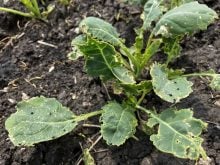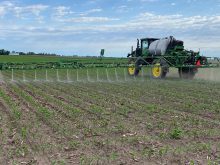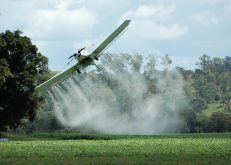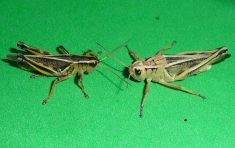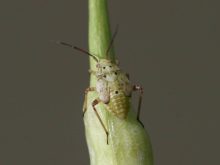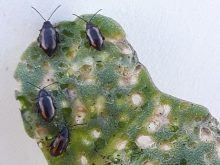Farmers who subscribe to the Prairie Pest Monitoring Network (PPMN) can get year-long information on what is predicted for their fields.
The online prairie-wide monitoring system forecasts insect threats, monitors insect populations and offers advice on the best way to scout for pests and keep them under control.
Owen Olfert is a research scientist with Agriculture Canada. He helped establish and design the network with funding provided through the Western Grain Research Foundation.
“As a federal government agency, we co-ordinate these activities over the region and provide updates and risk warnings for the entire crop growing area opposed to just individual provinces,” said Olfert.
Read Also

Growing garlic by the thousands in Manitoba
Grower holds a planting party day every fall as a crowd gathers to help put 28,000 plants, and sometimes more, into theground
He and his team operate out of Saskatoon with input from funding partners and provincial entomologists.
“(The collaboration) is varied, a big input is Environment Canada and they provide us with wind trajectories.”
There are three types of pests to watch out for: migratory species, native species, and invasive alien species.
Wind trajectories are important since they show if the wind is coming up into Canada from U.S. regions where pests are already an issue. Migratory species leave during cold winters and return by migration or being blown in. The PPMN can determine if the winds will bring migratory species along with it.
“The biggest threat to agriculture are the invasive alien species and those are ones that come from different parts of the world due to trade, and settlement and migrations.
Those show up without natural enemies, so we have to work with our collaborators overseas to solve some of those issues,” said Olfert.
Jennifer Otani, a PPMN co-ordinator based out of Beaverlodge, Alta., and said the forecast maps are popular on the site.
“The risk and the forecast maps are available in January through March. I think growers are making some choices about what crops they’re going to be buying seed for and also getting a sense of what they need to prepare for in the coming spring,” she said.
The site also produces weekly updates from May to August to help give farmers a head start in combating pest problems, said Olfert.
“The benefits go to producers that get these weekly updates on pest populations and they get advance notice of population build-ups or hatch of the various insect pests and that alerts them to get out and do some timing scouting in their field to determine whether its an actual issue infield,” he said.
Otani said she hopes to continue adding new features to the site. Currently, a seasonal scouting chart is available for canola growers with links to pests to watch for. She would like to see charts added for wheat and pulses.
“(We’re) hopefully helping them stay on top of some of their scouting maybe give them some tips on what they need to be doing in the field, but our real strength is also making sure there are links that they can find really reliable information that is also applicable to the Canadian Prairies,” said Otani.
The spring has been very hot and dry. The season has come early so Otani advises to keep watching the site.
“I think we’re just going to see a lot of insect activity and perhaps a bit earlier than some growers might be used to,” said Otani.





